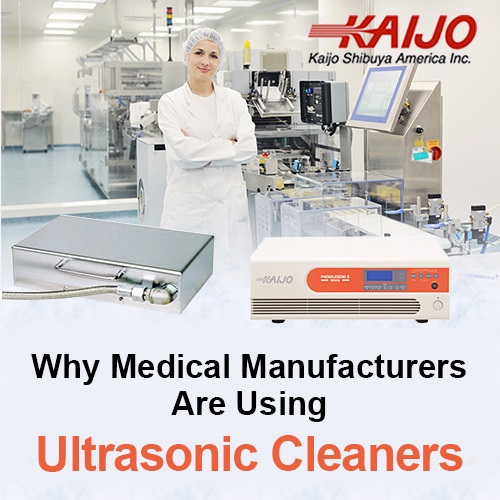Ultrasonic cleaning systems work by creating microscopic cavitation bubbles in a cleaning solution. An ultrasonic generator sends a high-frequency electrical signal to an ultrasonic transducer immersed in the cleaning solution. The transducer converts the signal to sound waves that travel through the cleaning solution and generate cavitation bubbles in time with the frequency.
As the bubbles form and collapse, they produce a scrubbing effect that removes contaminants from the parts to be cleaned. High ultrasonic frequencies create small, less energetic bubbles while low frequencies produce larger bubbles with an intensive cleaning action.
But sometimes, ultrasonic cleaning doesn’t deliver the expected rapid and complete cleaning performance. It’s usually because the cleaning system is not configured to match the cleaning task. To work properly, the bubbles have to be distributed evenly throughout the cleaning solution and there have to be enough bubbles for rapid cleaning.
Here are the factors that need to be specified correctly for the system to work properly:
- Not using the correct frequency – Heavily contaminated parts with hard surfaces (such as those made of steel) are best cleaned with low frequencies. Softer materials (such as plastic) require higher frequencies. Delicate components (such as electronics) or fragile material equipment can be cleaned safely with a high frequency ultrasonic cleaner. Choosing the right ultrasonic frequency based on material of the part or device being cleaned is critical.
- Not enough power – The system needs to have enough power to fill the tank with ultrasonic sound waves. If the system is not powerful enough, there will be dead spots where cleaning doesn’t take place and contaminants won’t be completely removed. In some cases where the parts to be cleaned have several different types of contaminants, two types of frequencies are used to clean those parts thoroughly.
- Uneven distribution of sound waves – Sometimes, the set frequency creates a resonance in the cleaning tank so that the sound waves are concentrated in some areas and lacking in others. Ultrasonic cleaning systems can be programmed to vary the frequency slightly on a continuous basis to avoid resonant hot and dead spots. To achieve an even distribution of sound waves and cavitation bubbles, the system may need more than one transducer, especially when cleaning larger parts. The transducers may have to be placed in different areas around the cleaning tank to ensure even cleaning.
Read our latest article, “I Tried Using Ultrasonics and It Didn’t Work. What Happened?” to learn more. Call Kaijo Shibuya to set up a free consultation to discuss your needs at 408-675-5575 or send any questions you may have to info@kaijo-shibuya.com.











Recent Comments